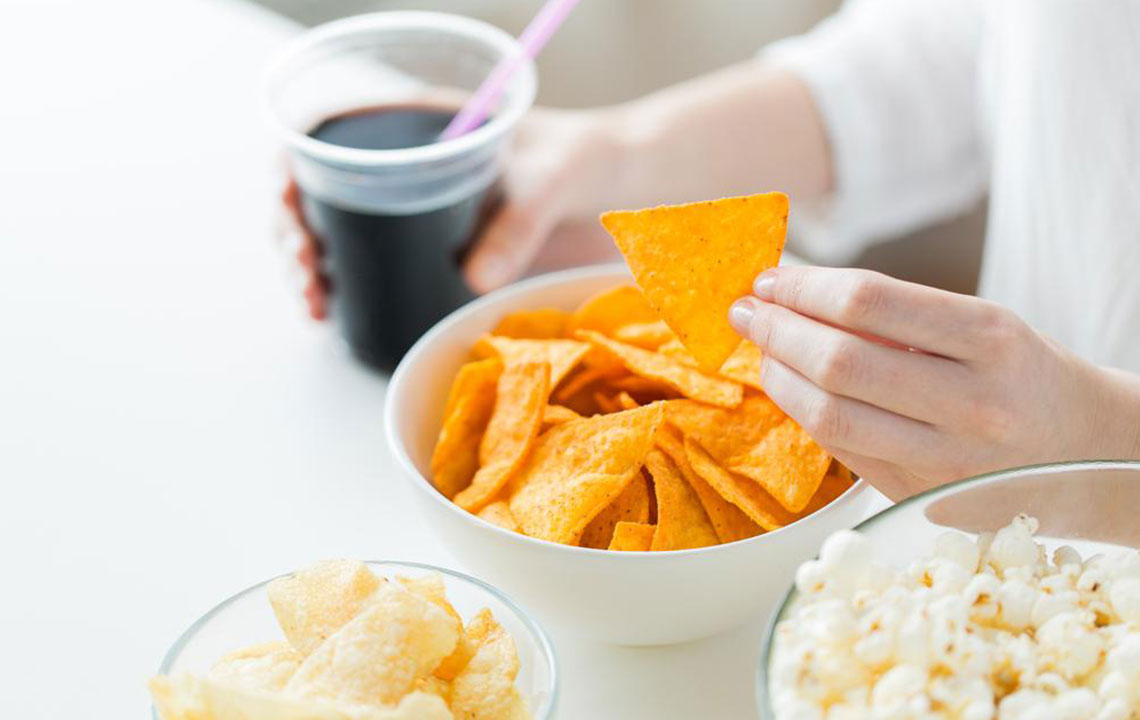List of Things to Eat and Avoid When You Have Diarrhea

Diarrhea is a disorder caused due to irregular bowel movements. A quite common digestive system disorder, diarrhea is caused due to food allergy, bacterial infection or due to eating something that is not digested properly. Often, diarrhea can occur as part of other diseases such as irritable bowel syndrome. It lasts for two to three days with loose and watery stools occurring throughout the day.
Common symptoms of diarrhea
Some of the common symptoms of diarrhea are as follows:
- Occasional bouts of nausea and a tendency to throw up
- Sudden weight loss
- Presence of mucus or blood in stool
- Cramps and pain in stomach and bloating
- Frequently visiting the bathroom to clear the bowels
Although diarrhea goes away after two-three days, it is necessary to consult a doctor if the symptoms become severe and persist for a longer period. Dehydration, fever above 102 F, severe rectal or stomach pain and presence of blood in stools are some of the indicators that diarrhea has become severe. In such cases, it is necessary to receive medical treatment to prevent any further health complications.
Treatment for diarrhea
For mild cases of diarrhea, it is enough to take off the diet. There are certain foods for diarrhea that alleviate the discomfort. Even in the case of severe diarrhea, it necessary to avoid certain foods and eat only that helps the healing process to progress faster. A careful diet comprising of essential food for diarrhea should be followed along with doctor-prescribed medications.
Food for diarrhea that you should avoid
Certain types of food are difficult to process for the digestive system. These aggravate the symptoms and make diarrhea worse. So, these categories of food must be avoided when suffering from diarrhea.
- Food with fats: Food that has been fried and is greasy can make the symptoms worse. Also, food that is covered in gravy should be avoided.
- Lactose-based food : One of the causes of diarrhea is lactose intolerance. However, even if diarrhea is not caused due to low tolerance to lactose, it is necessary to avoid dairy products when suffering from diarrhea. This is because the lactose present in these products is quite difficult to process for the digestive system. During a bout of diarrhea, the stomach is sensitive to food such as milk, ice cream, butter, and cheese. These are the foods for diarrhea that are best to avoid.
- Beverages : Alcohol-based beverages and caffeinated beverages such as tea or coffee cause the body to lose fluids quickly. These beverages are diuretics; they cause the body to dehydrate quickly. Drinking these can aggravate diarrhea.
- Artificial sweeteners : Artificial sweeteners such as sorbitol can have a laxative effect on your digestive system. It is recommended that food such as diet soft drinks, sugarless gum or candies, and artificial sugar substitutes should be avoided.
- Food that causes flatulence and gas : Vegetables such as cabbage, cauliflower, beans, and broccoli cause gas in the intestines. This can increase the discomfort caused by diarrhea.
- Food that has not been stored properly : Diarrhea makes the digestive system quite weak. Hence, it is necessary to be careful the food that is consumed. Food for diarrhea should be clean and should be stored in hygienic condition. Avoid anything that has not been stored, handled or cooked properly. Food such as raw meat and fish that has been out of refrigeration for quite a long time should be avoided.
Food for diarrhea that should be part of the diet
The best food for diarrhea is simple, bland, and thick in consistency. Here are some foods for diarrhea that should be part of the diet whenever the bowels go haywire.
- Chicken broth: Chicken broth contains electrolytes that deal with the dehydration caused by diarrhea. Drinking or sipping chicken soup can be soothing and replenish the body with the lost nutrients. Warm chicken broth can be comforting for stomach cramps as well.
- Mashed potatoes: High in potassium content, potatoes that have been boiled, steamed or microwaved can be soothing for the stomach. Add a pinch of salt for taste, but avoid too much of it. Avoid putting spices, butter, sour cream, gravy, or margarine to the mashed potatoes since these ingredients can irritate the digestive system.
- Bananas: Bananas are also high in potassium. These help to replenish the body with the lost electrolytes. One of the best food for diarrhea, bananas sooth the digestive system and alleviate painful diarrhea symptoms. Also, the high percentage of pectin in bananas absorb liquid in the intestines and help in the smooth ejection of stools.
- Oatmeal: Oatmeal contains soluble fiber which helps in the smooth movement of stools. Instead of adding any dairy products, bananas or cereals such as cornflakes, farina or cream of wheat can be added to oatmeal. Avoid adding honey, artificial sweeteners, or sugar to oatmeal.
- Lean meat: Lean meat such as broiled or steamed chicken or baked chicken is a safe and good source of proteins. It is easy to digest and replaces all the lost nutrients in the body. Avoid adding any butter, oils or spices to the chicken.


